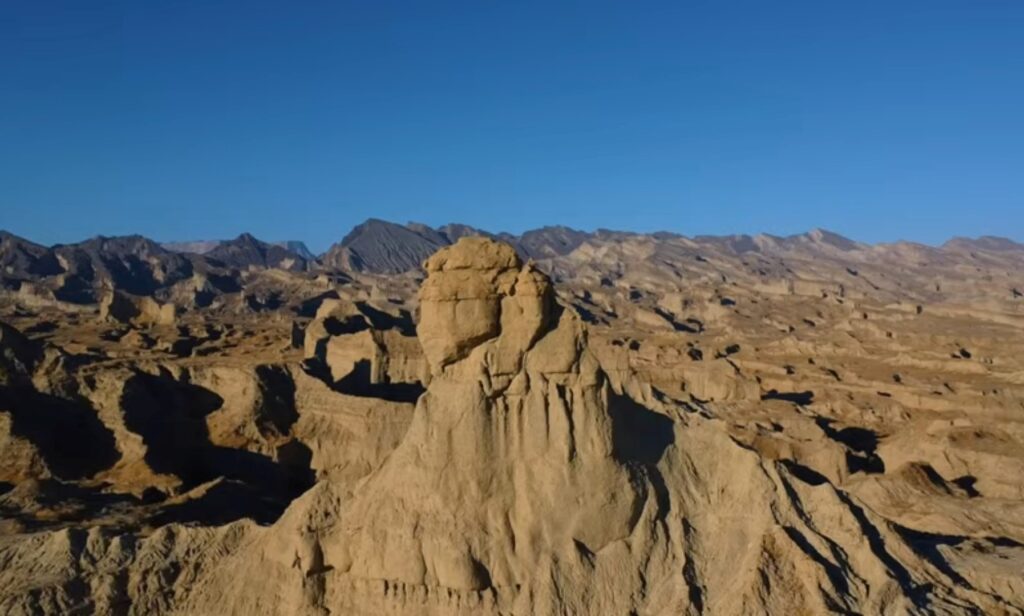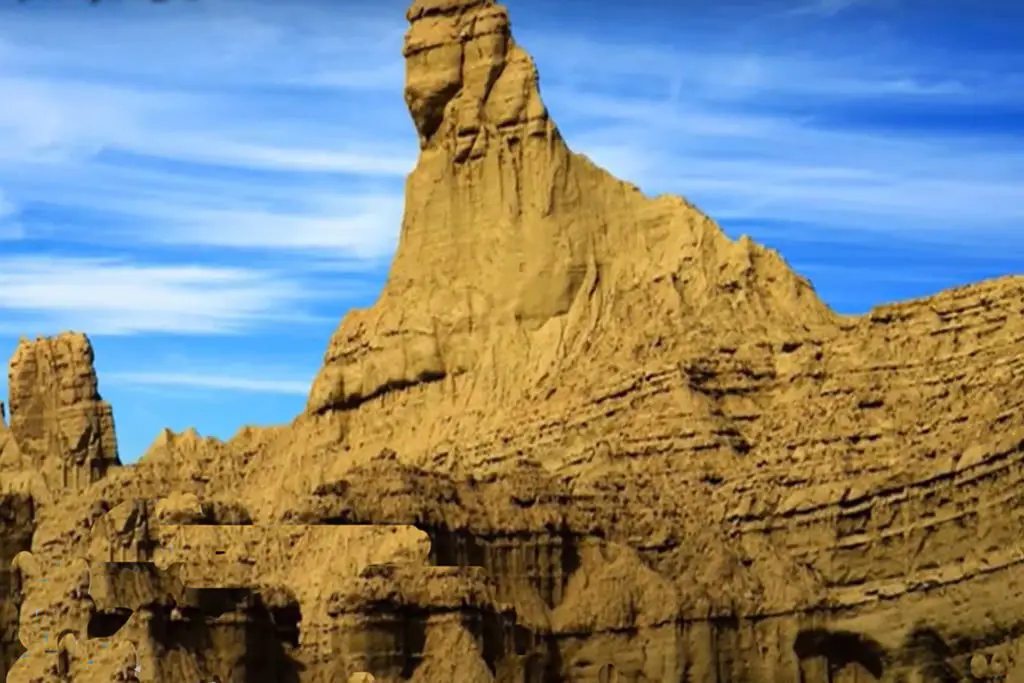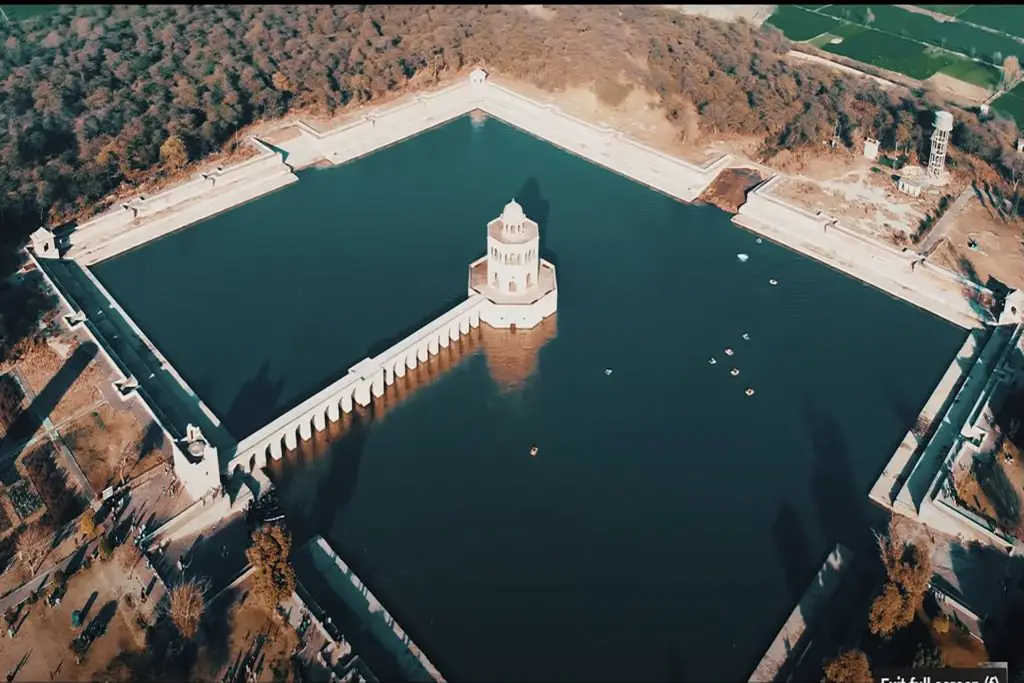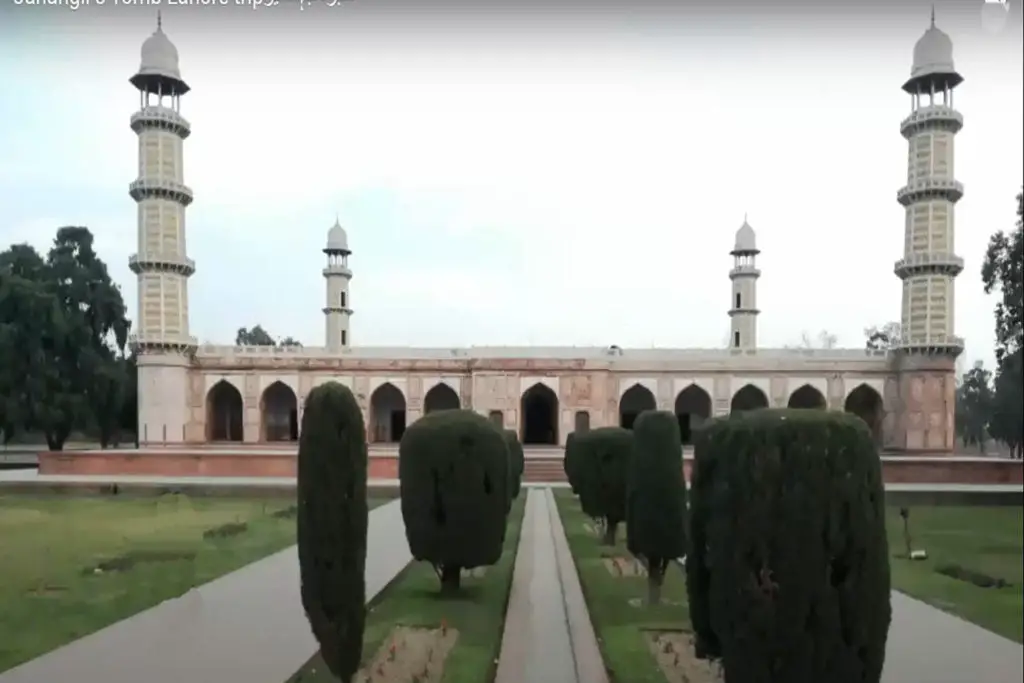Sphinx of Balochistan or The Balochistan Sphinx (or Lion of Balochistan) is a sphinx construction site in the Balochistan province of Pakistan that resembles a sphinx. It is located near the Makran Coastal Highway in Hingol National Park.
Pakistan is a country that is home to a variety of natural wonders, and the Sphinx of Balochistan is one such wonder that has been attracting visitors from around the world for many years. This natural rock formation is located in the Hingol National Park, which is situated in the southwestern part of the Balochistan province.
Pakistan Sphinx Distance from Karachi
The Sphinx of Balochistan and Princes of Hope is among the many images found on the Makran Coastal Highway about 100 miles from Karachi on the way to Gwadar. It is the place where the highway enters the mountainous area known as the Buzi (Goats) Pass. It is an amazing sight to see the magnificent objects of various shapes and sizes on the rocks, including the sphinx, the princess, and much more.
Geographers confidently state that these conditions are caused by erosion of the earth and the movement of air and water, yet legend has it that this was the site of the Prophet Sulaiman (King Solomon) and he often held his court here. The caves in the nearby Hunglaj Mata Temple are said to be caves where wildlife was imprisoned by the King.
There are more than queer stones here. Near these mountains are volcanic volcanoes. The whole area is part of Hingol National Park which spreads over a large area.
Although experts and journalists alike are considered to be mere evolutionists, the unique geological structure of Pakistan seems to resemble the famous Egyptian Sphinx.
Increase your website income by joining the Ezoic Program.
Balochistan Sphinx Location
Located in Lesbela, Pakistan, this mysterious structure appears to resemble, in some respects, the famous ancient Egyptian Sphinx in Giza.
This strange formation of Pakistan, therefore, has been the subject of debate and discussion among some historians and writers who are convinced that the ancient civilization lost its pre-Egyptian civilization.
The Sphinx of Balochistan and the Princess of Hope are just two of the many natural wonders that can be found in Pakistan. The Hingol National Park, where these attractions are located, is the largest national park in Pakistan and is home to a diverse range of flora and fauna.
Visitors to the Sphinx of Balochistan and the Princess of Hope can also explore the other natural attractions in the Hingol National Park, such as the Mud Volcanoes, which are located nearby. The Mud Volcanoes are a unique geological feature that spews out mud and gas instead of lava.
Sphinx of Balochistan History
The unique geological features of Pakistan were revealed to the world only when, in 2004, the Makran Coastal highway was opened, and people began to pass near the top of the globe. The highway connects Karachi with the port city of Gwadar on the coast of Makran.
The Sphinx of Balochistan is a massive rock formation that resembles the Sphinx of Giza in Egypt. The rock formation has a human head and the body of a lion, and it is believed to have been formed over millions of years through natural erosion. The Sphinx of Balochistan is a popular tourist attraction and is considered a geological wonder.
Expert’s Opinion of Sphinx Found in Pakistan
Despite extensive archaeological research, the rare Pakistani “Sphinx” is often referred to by experts as a form of natural selection. Different images from different parts of the geography may suggest some resemblance to the famous Egyptian Sphinx; A monument thought to have been inscribed on a single site, limestone, about 4,500 years ago, during the reign of Capernaum, a man also named for building the second-largest pyramid on the plains of Giza.
Images of the Sphinx of Balochistan — found in the Hingol National Park — cause much confusion and confusion, and some people may find it hard to believe that such geography was engraved and shaped by natural forces. To some, a place where the reflexes may seem to have been recorded in the past.
Features of Pakistan Sphinx
Looking at the “Sphinx” seems to show a well-defined jaw, as well as facial features that are as clearly visible as the eyes, mouth, and nose. These too seem to be completely separated, as if they were engraved in perfect harmony with each other.
So, wouldn’t this be enough to say that the Balochistan Sphinx was man-made and not my nature? Not really. We may be seeing something similar to the Egyptian Sphinx because of Pareidolia, a psychological phenomenon that causes us to see things that do not exist.
Also, it is impossible to say with certainty whether an object is a monument or not, or is carved by man, simply by looking at what appears to be a rock formation in the center. Without proper archaeological research, we would not be able to determine whether the mysterious geological formations were recorded by erosion or ancient civilization.
Over the years, different theories have described the unusual formation as one of the natural origins, as well as the origin of the artificial. Opinions are divided. Another author, Bibhu Dev Misra, who runs the blog, claims that the Sphinx of Balochistan is part of a larger structure and that the Sphinx is clearly surrounded by the remains of ancient stone temples.
Describing the Sphinx of Balochistan, the Bible Dev Misra explains: A closer look at the impressive image shows that the Sphinx has a clear jaw, as well as clear facial features such as eyes, nose, and mouth, which appear to be perfect. other.
But if it is indeed a man-made monument, who recorded it, and when was it recorded?

Ironically, just as the ancient Egyptian Sphinx appears to have a hat — called the Nemes — its Pakistani counterpart appears to have it as well. Of course, this may be just the tip of the iceberg pareidolia, drawing dots between a well-known monument — the ancient Egyptian Sphinx — and geographical features resembling an Egyptian monument.
In addition to certain elements surrounding the upper part of the earth’s crust such as the Egyptian Sphinx, Bibhu Dev Misra states that similar features near the Sphinx are suspected to be evidence of human activity, and contradict the notion that the area was recorded by climate erosion.
The author argues that we can see a clear parallel structure of the steps and pillars around the Sphinx, which provides further evidence for the view that the Sphinx of Balochistan was man-made and not natural.
As for its age, it is impossible to know. The 12,000-year-old has been thrown around by various blogs and writers. However, since we cannot know whether this is really a Sphinx or not, it is impossible to raise the age of the suspected Sphinx.
Without extensive archeological and archaeological work, we would not know that the sphinx of Balochistan site was recorded by a long-lost, forgotten civilization — as some writers think — or if it is another place on Earth where climate erosion and climate erosion. Geology recorded an interesting phenomenon.








